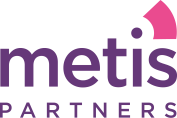The IP sessions key takeaways
One of the most requested IP insight topics from our IP-rich IP100 entrants is IP strategy. In particular how to create and manage an IP strategy to (a) increase the valuation of their business and (b) better communicate that IP strategy internally to colleagues, to help them improve business performance and externally communicate to investors and stakeholders, who want to know you have an IP strategy to drive business growth.
In the IP sessions, we focused on:
- Session 1: IP Strategy Planning – offering participants valuable insights and answers on the purpose of an IP Strategy; and
- Session 2: IP Strategy Tactics – we discussed the practical steps, actions and activities needed to translate the IP strategy into a workable plan, which will measurably strengthen the competitive moat around the business and increase the valuation of the business.
Some of the key takeaways from the sessions were:
- There is no one-size fits all approach to IP strategy. Every business needs an IP strategy tailored to their own needs, recognizing the strengths and weaknesses of their current IP portfolio, their business goals and identifying the IP assets they may need to strengthen their IP portfolio and competitive moat in the future.
- Try to make your IP strategy simple, in a confidential word document or brief ppt deck or some other format that easily conveys the key points of the IP strategy, gets everyone (C Suite, key staff, investors and other stakeholders) on the same page and is easy to update regularly.
- Adopt an IP strategy that fits within your financial budget, which for example may be focused on low-cost prior art searches and analysis for early-stage businesses, which can then be expanded into more expensive IP strategy activities, once funding has been received and the business grows e.g. full FTO searches, etc.
- Recognize that external validations of your IP are important and ensure that any IP management plans/activities and any third-party validations of your IP assets are documented and communicated to funders and investors, particularly for pre revenue businesses that don’t yet have revenues and profit to validate value creation.
- Always have an eye on the exit when signing license or JV agreements, plan how you might get out of the agreement relatively painlessly, before you get in, while ensuring your IP is protected throughout. Partnerships or JVs often fail, when the licensee or JV partner experiences CEO or CTO changes, maybe the market shifts or the licensee’s strategy changes or M&A activity takes them in different direction. As a result, your previously important and valuable license may become non-core for them and your royalties from them may decline or stop completely. At that point its often too late to change the termination clause or covenants to allow you to quickly exit the partnership and find a new partner or licensee. So plan that exit ahead of time.
Below are the session recordings where we dive deep into IP strategy and tactics. If you would like to discuss your IP score or gain further insight into IP asset improvement strategies that will increase the value of your business, please email us at info@metispartners.com.

